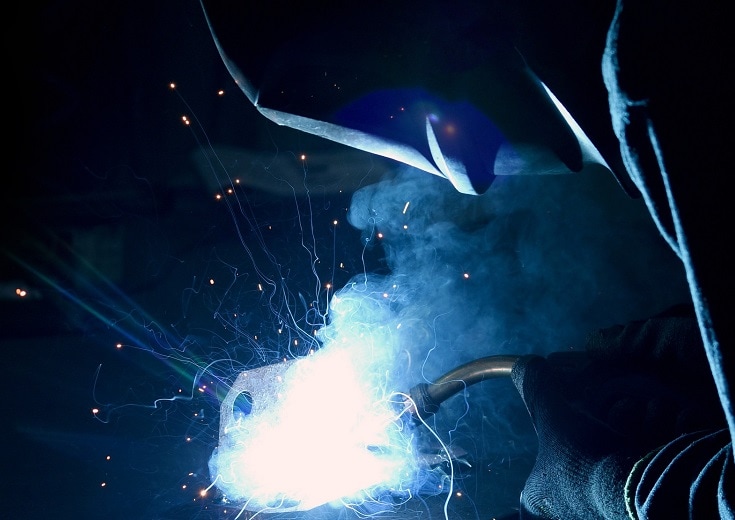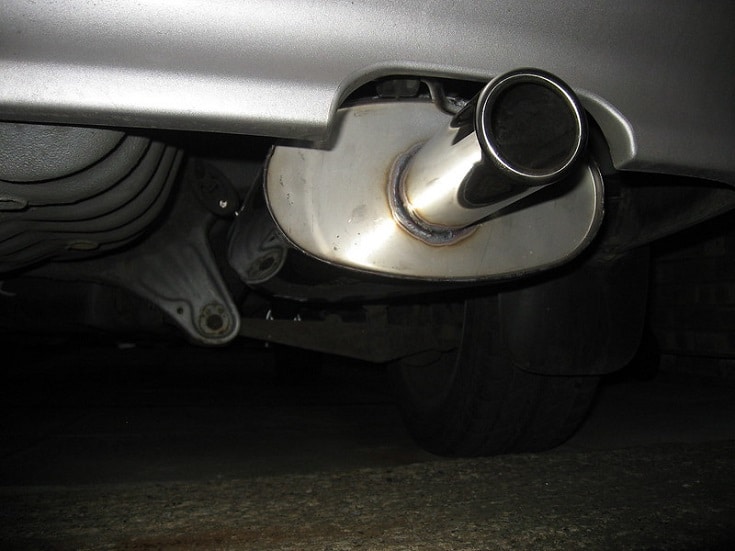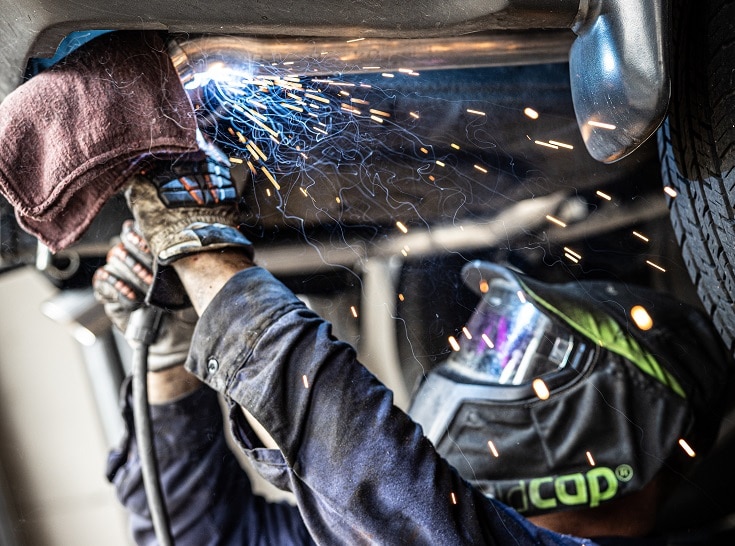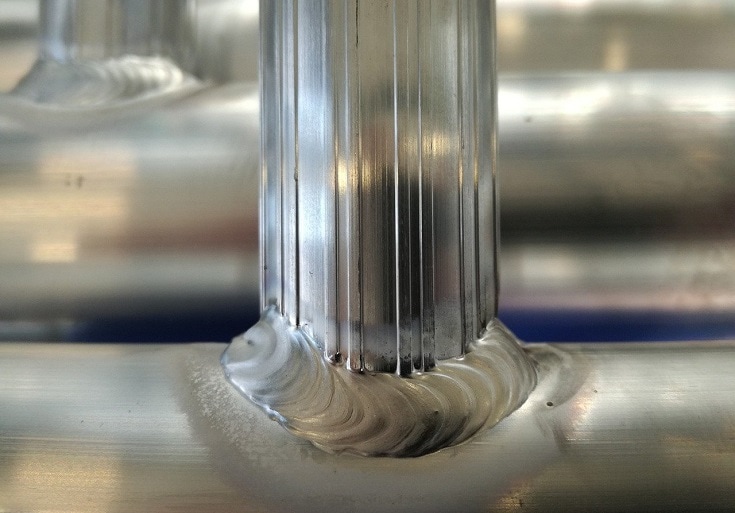How to MIG Weld Stainless Steel – What You Need to Know!
Last Updated on

Whether you are the welder working on auto parts in the garage or the one repairing damaged kitchen sinks, knowing how to weld stainless using MIG welding is beneficial. Stainless steel is best known for its long-lasting and rugged properties. Learning the process of MIG welding may seem complicated, but the basics are relatively simple.
Machine Inert Gas (MIG) welding, involves the use of continuous solid wire electrode. The method is effective in welding stainless steel since it leaves no spatters. Keep in mind that there is a difference between welding steel and how to weld stainless steel. The latter is reputable due to its corrosion resistance.
Using stainless steel is recommended in areas requiring high hygienic measures and places where distortion occurs when subjected to heat. This material has lower thermal conductivity, a property that enables lowers dispersion of heat during welding.
Factors to Consider During Stainless Steel Welding Using MIG
Most welders prefer MIG to weld stainless steel and other metal forms due to the welding’s straightforwardness and simplicity. Over the years, technological advancement in the welding industry has enabled the use of MIG welding robots, especially in industries, to boost production.
Here are some factors to consider to achieve great welding results.
1. Selection of an Inert Gas Blend
The most significant task in MIG welding is selecting the ideal inert gas. You do not want to find yourself using completely inert shielding gases such as argon or helium for the stainless steel MIG process. Remember, the arc in the MIG process involves using a filler material, which is different from other methods like TIG. Ignoring this vital factor could have negative impacts on the efficacy of the welding process.
2. Bracing the Joint During Welding
During welding, you can brace the joints to prevent the workpiece from slipping and ruining the joint’s angle. Alternatively, you can use woodblocks cut with a wood routing machine in place of the braces. Bracing using wood can be done by creating a scaffold-like system of supports that control the distortion. Remove these wood cuttings once you finish welding.

Bracing the weld section can also be done by constructing a jig. Before using jigs to brace, you should determine the amount of weld needed. The more the requirement of welds, the more the bracing.
3. Cleaning the Weld Joint
Welding steel requires you to work on a clean surface. No matter how clean your welding surface is, spatter formation is inevitable since one has to use filler materials during welding.
These weld spatters may still form even with the use of a fast and efficient welding machine. As you continue welding, the spatter becomes sharper or forms burrs, which can cause injuries to the welder.
Most welders prefer subjecting the welded stainless-steel wire through secondary processes. These processes include electropolishing or sanding. Note that selecting these secondary processes solely depends on the application of the custom metal form.
4. Distributing Heat from the Weld
Even distribution of heat involves the transmission of heat in equal measures throughout the welding process. Spreading the heat equally can be done by backstepping, staggering, or allowing the joint to cool down before welding it further. If heat is distributed unevenly, you are likely to end up with cracks and burns. You can use MIG welding robots to distribute heat evenly.
How to Weld Stainless Steel Using MIG
MIG welding of stainless steel requires the welder to continuously feed a solid electrode wire into the weld pool. You also need to provide a shielding gas to protect the weld from getting contaminated by impurities. Here are the steps to follow during MIG welding.
1. Torch Set-up
Begin with setting up the torch. This procedure involves setting up the filler wire from the MIG welder’s reel to the welding torch’s tip. Ensure only ¼ inch of your welding wire remains visible at the end of your torch. Then, activate the shielding gas to start the welding process.

2. Determination of the Correct Angle
Ensure the flame hits directly on the required area. You can achieve this precision by placing the torch at an angle of 30 degrees from the joint end.
Depending on the work you are doing, ensure you position yourself in a proper travel angle.
A travel angle ranging between 5°-15° gives the best results when you hold your gun at 90°.
Greater angles of 45° to 70° are desirable when dealing with T-joints and lap joints.
3. Pull up the Beads
Turn on the power and gently draw the weld bead towards the end area. Ensure you use moderate power and speed to avoid forming spatters.
Tips to Get the Best Stainless Steel for MIG Welding
Currently, the market is flooded with different types of steel. Each type has its distinctive quality. Always exercise great caution when shopping for a particular kind of steel.
Here are some of the tips to consider.
1. Go for austenitic steel
These types are renowned for their large compositions of nickel and chromium. Austenitic steel is better off than Martensitic and Ferritic steels. The last two contain large quantities of carbon elements. This property makes them highly magnetic.
2. Filler Materials
Ensure you get filler materials that are similar and have the same configuration as the metals’ base.
The Most Common Gas and Electrodes to Use for MIG Stainless Steel Welding
When MIG welding stainless steel, the correct choice of gas matters a lot, you can use pure Argon or a blend of Argon and other minor gases. You can also use a stainless gas mix such as the BOC’s Stainshield range of Helium, Carbon Dioxide, and Argon. These stainless gas mixes are essential to MIG weld stainless steel, which is more exotic. These exotic steel types include Hastelloy, Monel alloys, and Inconel.

MIG welding of stainless steel also requires the use of a gas with a slightly higher flow rate. The recommended flow rate should be around 14-16 liters per minute. Remember to engage your gas suppliers on the gas requirements before embarking on a particular project.
The most common electrode used to weld stainless steel is the ER308 L. When using this type of electrode, the gas type to use is C2. C2 consists of 2.5% Carbon Dioxide, 7.5% Argon, and 90% Helium. Note that the setting for stainless steel and several nickel-based alloys are very similar. Be sure to ask your electrode supplier about the types of electrodes in stock before procuring. You can also procure an electrode wire and gas selection chart to guide you on the most plausible selection for your welding.
What are the Necessary Gears for MIG Welding?
Protective gears are imperative in any form of welding. You need:
- A welding jacket or sleeves
- Welding safety glasses and gloves
- Auto darkeningwelding helmet
- Knee pads and welding chaps
- Welding boots
- A respirator or mask
- Welding clamps
- Metal brush
- Angle grinder
- Shielding gas
- Electrodes
- MIG welder
FAQs
Which is the Best Welding Wire in Stainless Steel MIG?
The best wire to use is a stainless MIG wire. You can also use a mild steel MIG wire. The major problem associated with using a soft steel MIG wire is that it forms rust. You can prevent this rusting by coating the welding wire.
How Do You Differentiate Authentic Stainless Steel from a Counterfeit One?
Currently, the market is flooded by many stainless-steel products. Some are legit, while others are counterfeit. Rogue producers use a coating to replicate the appearance of real stainless steel. As a welding professional, you can pass over an ordinary magnet to determine whether your product is authentic. Genuine stainless steel is a low magnetic conductor.
Why Use a Spool Gun?
A spool gun keeps the welding wire in the welding machine. It also helps the welder switch out the stainless wire to the spool. This action saves time during welding. Before you begin working on your machine, ensure you load the spool gun correctly.
Why Back Purge?
Back purge is necessary to prevent contaminating the weld with impurities. Be observant on purging at the backside of the machine’s tubing. You can back purge by fitting a hose pipe with a T junction. Ensure you fasten the hose pipe with tin foil for more reinforcement. This procedure needs to be done on the inside of the tubing to fill them with welding gas.
Final Thoughts
Knowing how to MIG weld stainless steel should be an essential skill in your welding career. Stainless steel is a sensitive material and also among the most widely used items in the market. The details shared above will guide you in your mission of welding stainless steel using the MIG process.
You may also be interested in: Can You Weld Stainless Steel with Flux Core? All the Facts!
